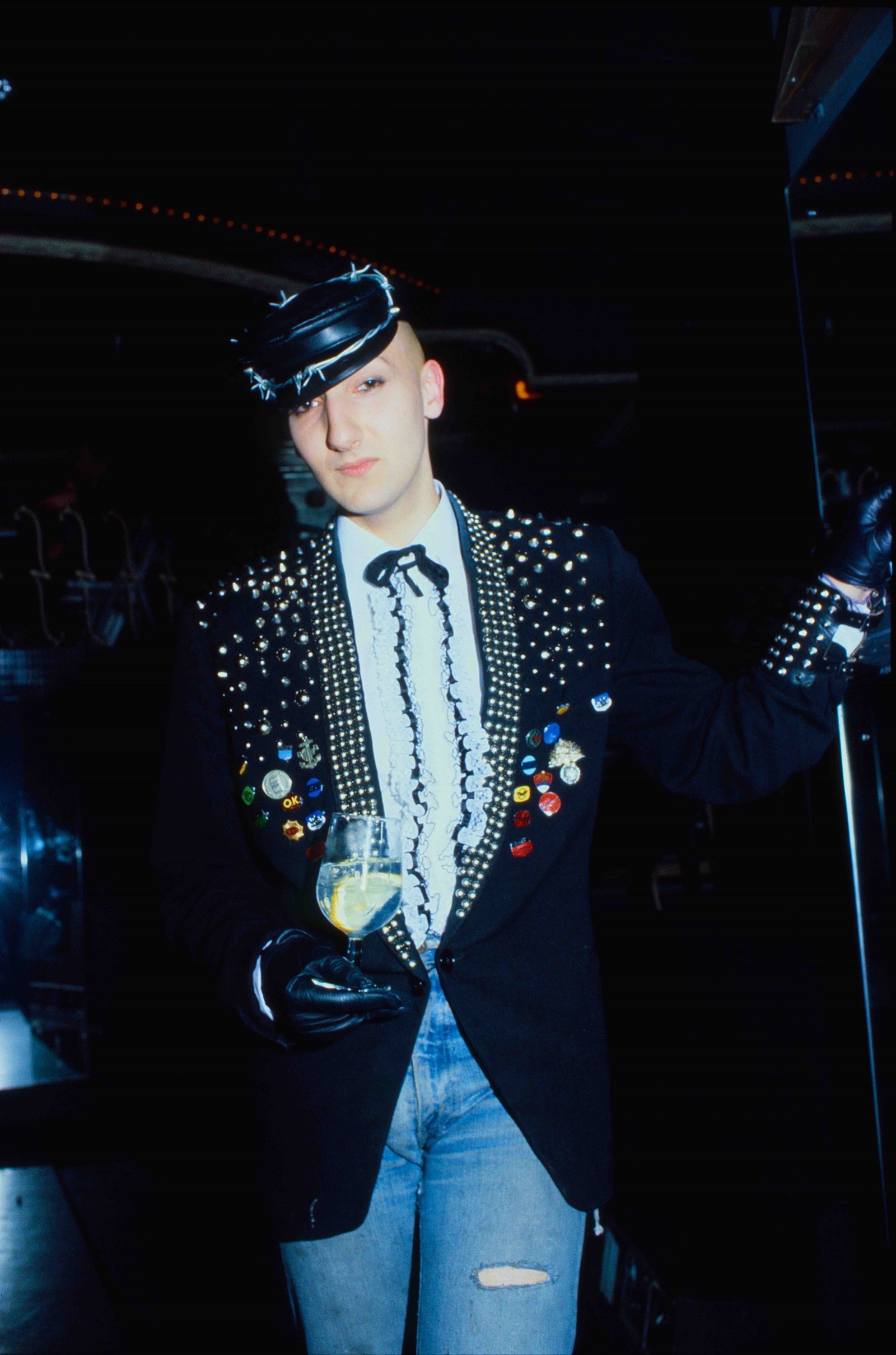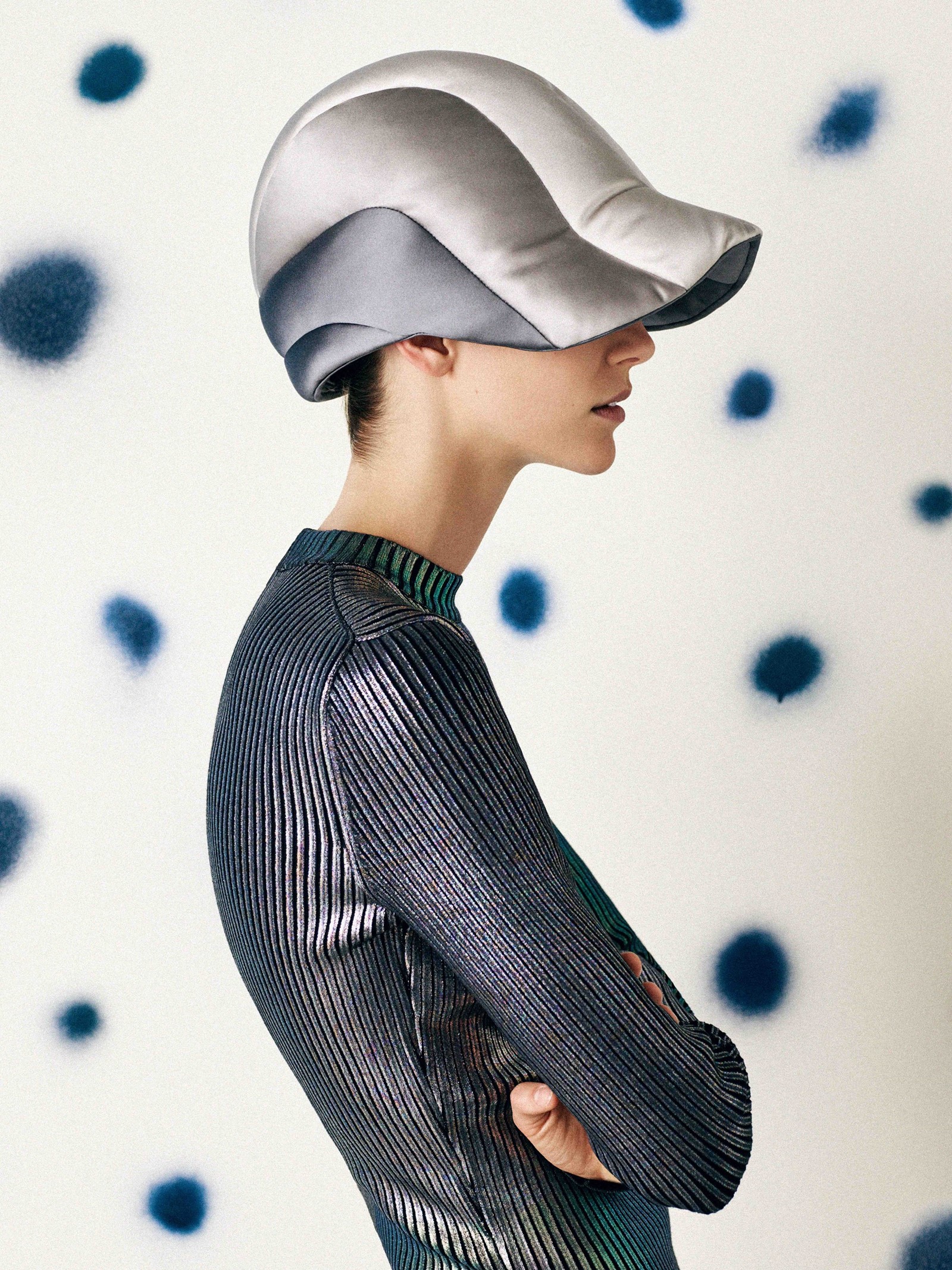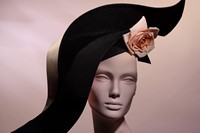Stephen Jones once described his work as the ‘punctuation’ in the grammar of fashion – but in Paris, there is a museum show of his works that acts as a riposte. There’s an entire vocabulary of hats, and Jones’ work is an encyclopaedic exploration of every nuance and accent known (and unknown) to man. Chapeaux d’Artiste opens tomorrow at the Palais Galliera, but Jones walked and talked through the show a few days before, as finishing touches were still being placed, in a whirlwind trip through his own history and, coincidentally or not, some of the greatest fashion moments of the past century.
Jones, of course, hasn’t been in fashion that long – but the show roams through the Palais Galliera’s archives to place his hats in tête-à-tête with some of the great millinery of the 20th century and before, including an original Phrygian cap alongside a Jonesian version with dangling rhinestones that would have incited a guillotining, and a satanic Balenciaga with a pair of horns formed from satin-balled hatpins. The juxtapositions both serve to modestly mark great millinery’s influence on Jones, but also to highlight his place in the canon of fashion.
Jones’ own story began in the 1970s, when the hat was decidedly out of fashion. Besides avidly poring over mid-century Vogues as a student at Saint Martins, Jones worked as an intern for a dusty London couture house named Lachasse, where he gravitated towards the millinery workroom. The first hat he made during that time sported plastic flowers given to Jones’ mother free from a petrol station, and a pillbox crafted from a cereal box, covered with scraps of his sister’s blouse. The head of Lachasse’s millinery, Shirley Hex – later a lecturer at the Royal College of Art – admired its unconventional modernity. And, although later much refined, the silhouette of Jones’ early work was present and correct here. “People often say ‘Oh they’re all quite small’,” Jones recounts, of his hats. “I say yes, because my history is people dancing in them, in clubs. In reality. It wasn’t this giant fashion show.” Although, of course, the Blitz club kind of was a giant fashion show, and that’s where Jones hats were often first debuted.

While the exhibition opens with a look from his 1979 graduation collection from Saint Martins – which Jones admits had been miraculously preserved – the second space, of around 13 small salons constructed inside the Palais, is devoted to punk and Blitz, to partying in hats. Which is, really, how much of Jones’ career began. He made hats for Kim Bowen, a great friend and fashionable London figure. She was seen out by Steve Strange, who hooked Jones up with a disused basement to create his first own-label shop. Boy George became a client, and put Jones in the video for Do You Really Want to Hurt Me wearing his own label fez. And Jean Paul Gaultier saw that, asking Jones first to model and then to create his hats. It’s a mind-boggling game of five degrees of separation, all started by people dancing in hats and a graduation collection of Prince of Wales-esque feathers made from dead seagulls.
“People often say ‘Oh [your hats] all quite small. I say yes, because my history is people dancing in them, in clubs. In reality. It wasn’t this giant fashion show” – Stephen Jones
For some reason, that dead-seagull-to-dead-chic thing really resonates as part of Jones’ story – where the mundane transmogrifies into something sublime, and where there’s a constant interplay between the idiosyncratic, brash, sometimes dirty, and the faultless chic. First off, there’s Jones’ shift from his upbringing in the North-west near Liverpool down to London, and then the interplay between London and his later work in Paris. It’s where you see Jones twisting the form of everything into something else, from top hats and berets (the stereotypical titfers of those respective cities) to millinery sacred cows like Elsa Schiaparelli’s 1937 shoe hat, co-designed with Salvador Dalí. The original is displayed alongside Jones’ iterations – “There are three in the world,” he commented. “One at the Met, one at the V&A, and here. But this was Gala’s [Gala Dalí, Dalí’s wife and muse], so was the first one.” Nearby is a Jones hat created from a vibrantly patterned crepe. “This was designed by Cecil Beaton in 1947, and I had it reprinted by Zika Ascher because I met him just before he died,” Jones said. “They still had the screens.”

The first two-thirds of the exhibition features purely hats – some 170 in total – as abstract objects grouped into general themes. They focus on Jones’ own-label collections – he’s produced a staggering 85 to date – while also highlighting his story of travelling from London to Paris, physically and ideologically, and the duality of influence on him. After, comes the notion of Jones himself wearing “many hats”, as milliner of choice to a multitude of couturiers, creating wildly differing styles for designers from Gaultier through Claude Montana, Comme des Garçons, Thom Browne, and John Galliano at his own label, Givenchy, Maison Margiela and of course Dior. The Palais Galliera, as a Parisian institution, focuses on Jones’ efforts for collections shown in Paris – his creations for Marc Jacobs, for instance, are represented through Louis Vuitton. And the startling effect here is the infinite variety and endless reinterpretation of not only specific styles but of Jones’ constant renewal and creative reimagining. It’s far more than punctuation – it’s a language all its own.
Chapeaux d’Artiste by Stephen Jones is on show at the Palais Galliera in Paris, from 19 October 2024 – 16 March 2025.






